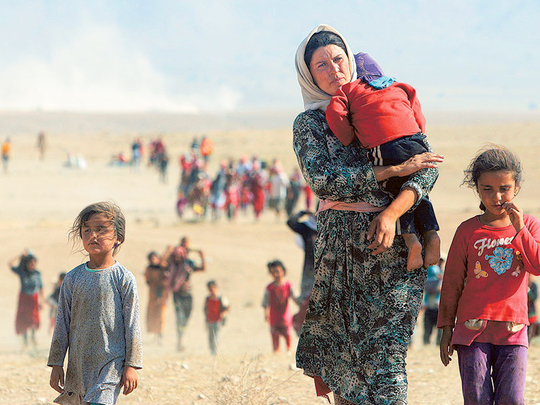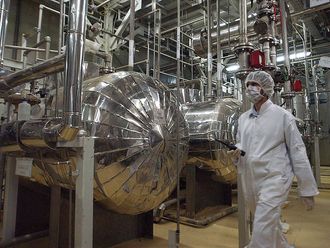
Beirut: Although the March 2011 anti-Ba‘ath regime uprising was peaceful during its first six months, Syria plunged into an unprecedented cycle of violence that has continued ever since, causing the deaths of at least 250,000 Syrians, creating nearly 10 million internal refugees, with an additional 3.8 to 4.7 million lingering in Lebanon, Jordan, Turkey, Iraq, Egypt and dozens of other countries making it the worst humanitarian crisis of the 21st century.
Observers predicted at the time that the regime of President Bashar Al Assad could not possibly sustain its stranglehold on the country. However, Damascus managed to limit the political damage, relying heavily on Iran, Hezbollah and Russia to strengthen its capabilities, and regain lost territories.
Four years later, Damascus is no longer in retreat, even though the emergence of Daesh in Iraq and Syria could pose a long-term threat to Al Assad and his regime.
The division and disorganisation of Syria’s various opposition groups from the Free Syrian Army to the Syrian National Council to the National Coalition for Syrian Revolutionary and Opposition Forces helped contribute to their slow decline.
As a result, more radical groups like Jabhat Al Nusra, an Al Qaida affiliate, and Daesh were able to emerge, with a strong appetite for brutality and revenge.
In 2014, the emergency of Daesh has added an additional layer to Syria’s conflict, as a US-led coalition is now actively striking the extremist group in various locations in northern Syria where they held much territory.
Undoubtedly, the world’s preoccupation with fighting Daesh who gained notoriety for their brutal beheadings and killings of captives, has taken the spotlight from the Syrian people who are living in diaspora, poverty and fear.
Ironically, several Western governments are now changing their tune, with some beginning to believe that the regime is less of a threat than Daesh.
It is not entirely clear whether the logic here is to keep the Baath regime tied to the local scene so that both sides—the government as well as Daesh—are mired in perpetual conflict. In the event, such a scenario would guarantee a stalemate with no side likely to emerge as a winner. The scenario would be very similar to one that Henry Kissinger proposed to the White House during the Iran-Iraq war in the 80s which was a log-jam where both parties could not win or lose.
It seems as evident as ever that such a policy was adopted by US president Barack Obama in Syria, while the UK and France still maintain that Al Assad must step down from power.
However, a temporary rapprochement between Damascus and key Western powers seems to be materialising as the focus shifts to fighting Daesh.
As the Syrian conflict enters its fifth year, the survival of the Al Assad regime benefits three parties: Iran, an ambitious regional power, Hezbollah, an equally determined Lebanese militia, and Russia, a global foe that holds on to its last piece of Middle Eastern real estate.
The Syrian people will continue to pay the price of the total destruction of their once beautiful country.
Human rights organisations have placed blame on the international community and particularly rich Western countries for failing to help stop the crisis and ease the suffering of the people.











